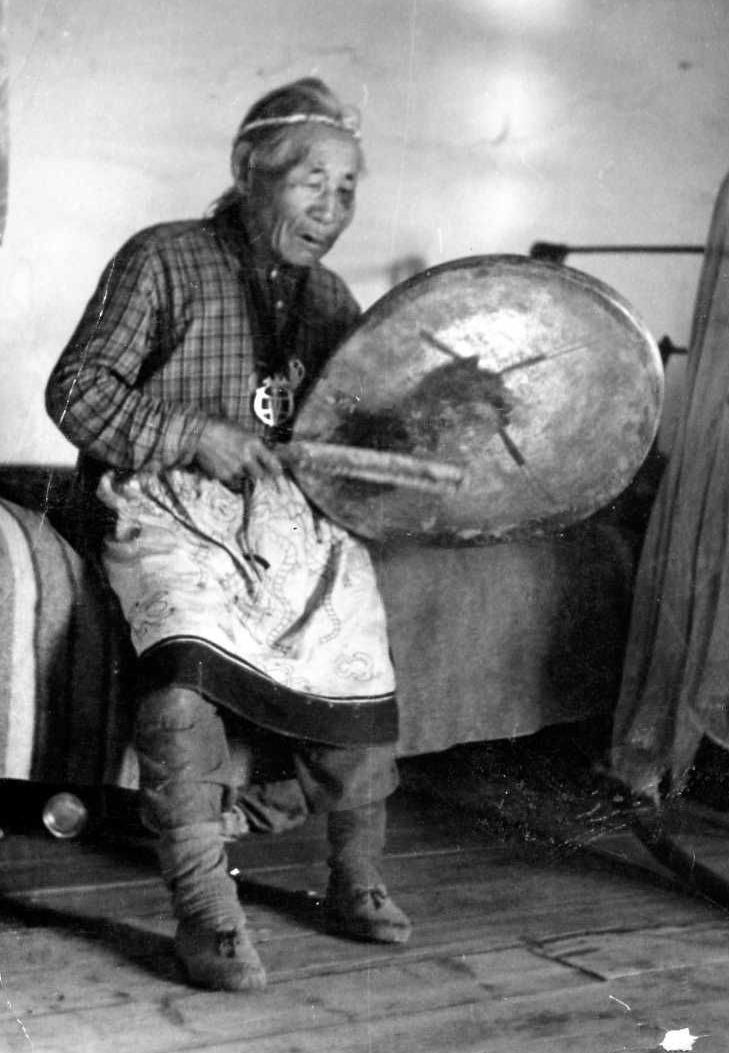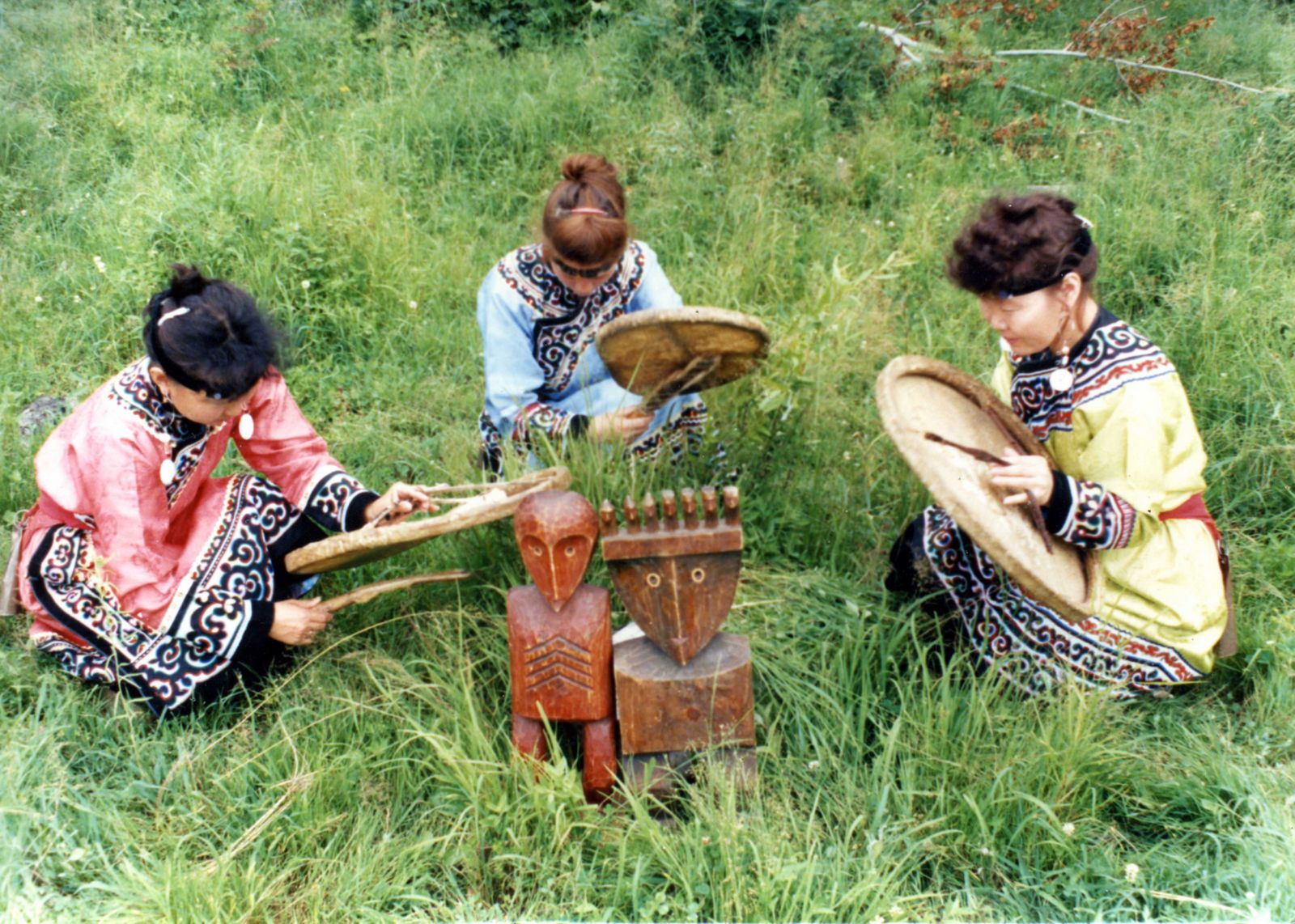|
The transition from traditional Nanay shamanism to neoshamanism
Tatiana Bulgakova
At the turn of the century, traditional Nanay shamanism seemed to die
out, but instead after a short gap it arose again with a new
appearance, having acquired some new methods, but preserved in its
essence.

(photo courtesy Tatiana Bulgakova)
|
Until
the mid-1990s in Khabarovsk region in Russia, there were still several
actively practicing traditional shaman-elders, who were notably
isolated from their cultural surroundings (some of them did not even
speak Russian). Since early 1980s those shamans made several attempts
to initiate some new candidates as shamans, but all of them were
unsuccessful: all the candidates died right away after their
initiation. These years there were also many Nanays who, according to
the shamans’ explanation, were taken ill with shamanic-like disease,
but as they refused the shamanic call, they also died.
For about three decades, not one new Nanay shaman became active, so the
entire generation produced no shamans, and only in 2005-2006 did
several new shamans appear almost simultaneously. The new shamans’
practice differed from the traditional ones to such an extent that we
can affirm that traditional shamanism has turned into neoshamanism. |
The most remarkable trait of Nanay neoshamanism is its renunciation of
some traditional cultural and social patterns. The neoshamans were not
able to continue the religious traditions in its completeness any more
because of their loss of Nanay language and the minimal cultural
knowledge necessary for performing the rituals. At the same time,
all of them were sure that they had inherited shamanic spirits from
their Nanay ancestors.
To compensate for the lost traditional knowledge, neoshamans used any
accessible information on different religious and occult doctrines,
picked up mostly through mass media. For example, the Russian
extrasensory individual Konovalov, the Georgian healer Davitashvili,
and the Bulgarian healer Vanga became quite popular among the new Nanay
shamans. The mass media information on unidentified flying
objects (UFOs) impressed one of the candidates for shamanship to such
degree that she asserts that a UFO delivered to her an ultimatum that
she must start shamanizing.

(photo courtesy Tatiana Bulgakova)
One of the factors affected by this overrunning of ethnic and
confessional boundaries is the loss of local shamans who would be able
to initiate the new ones. Looking for those who could initiate them (or
who were the proper person to ‘steal power’ from them), the neophytes
applied to the foreign neoshamans, extrasensory healers, chiromancers
(palm readers) and Buddhists. To meet them the neophytes traveled to
other regions (e.g., to Buryatia) and even to another country
(China).
Unlike the traditional Nanay shamans, the neoshamans prefer not to
limit themselves to only one source of shamanic power, but to gain
several of them. As a result, one of our informants, a woman-neoshaman,
who was initiated by a Buddhist, called herself in different situations
variably a shaman, a healer, a “cosmic power specialist”, an
extrasensory individual and or a chiromancer.
The local Nanay intelligentsia and the administration, both of whom are
engaged in revival of Nanay traditional culture, force some Nanays to
become initiated as shamans. They time it for certain cultural
occasions such as festivals, meetings and conferences. Thus, in
anticipation of a visiting Buryat shaman, the administration of the
Nanay district put together a list of those people (mostly children)
who, they assumed, would be able to become shamans, and brought them to
the town for the official initiation.
|

